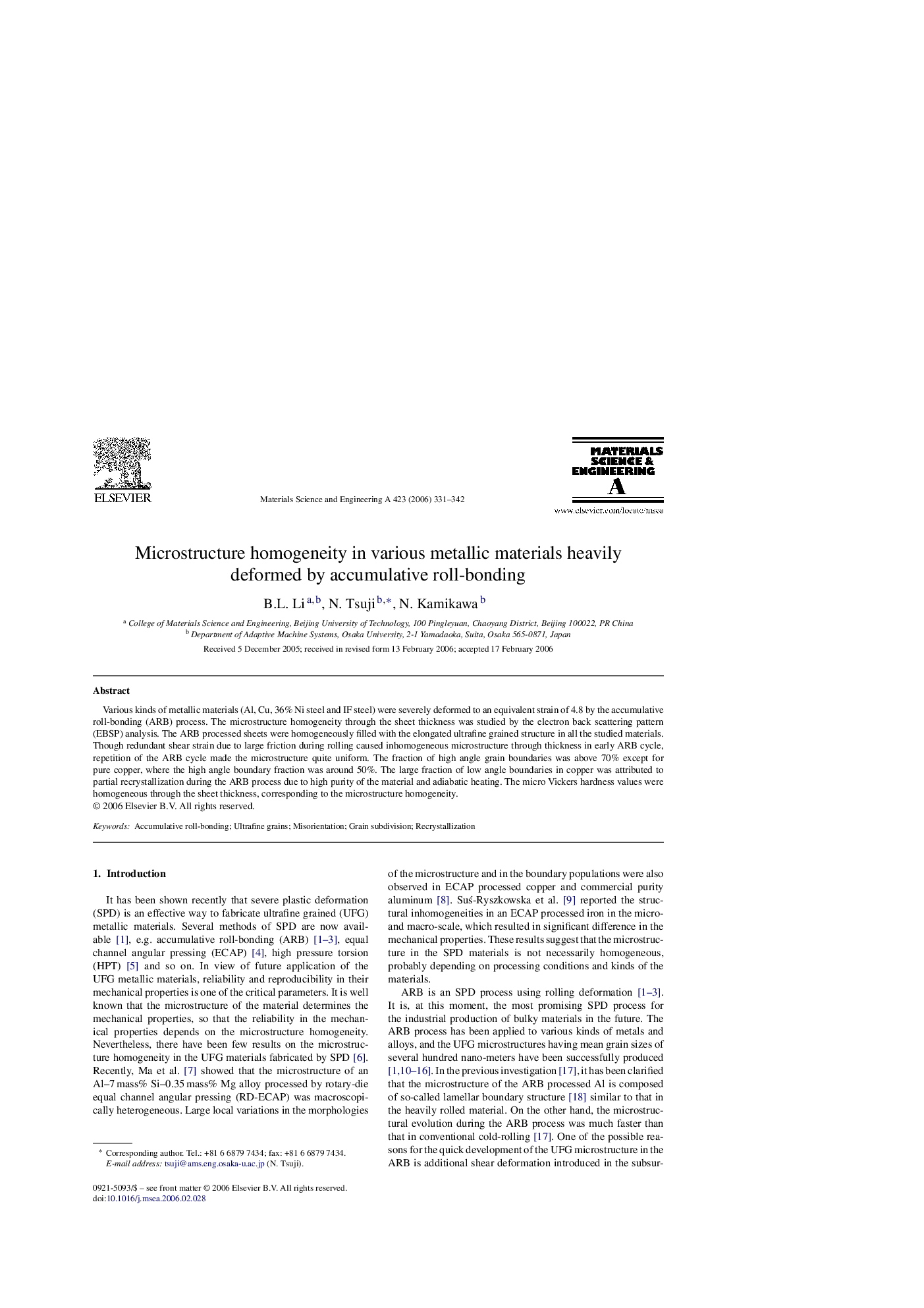| Article ID | Journal | Published Year | Pages | File Type |
|---|---|---|---|---|
| 1585685 | Materials Science and Engineering: A | 2006 | 12 Pages |
Various kinds of metallic materials (Al, Cu, 36% Ni steel and IF steel) were severely deformed to an equivalent strain of 4.8 by the accumulative roll-bonding (ARB) process. The microstructure homogeneity through the sheet thickness was studied by the electron back scattering pattern (EBSP) analysis. The ARB processed sheets were homogeneously filled with the elongated ultrafine grained structure in all the studied materials. Though redundant shear strain due to large friction during rolling caused inhomogeneous microstructure through thickness in early ARB cycle, repetition of the ARB cycle made the microstructure quite uniform. The fraction of high angle grain boundaries was above 70% except for pure copper, where the high angle boundary fraction was around 50%. The large fraction of low angle boundaries in copper was attributed to partial recrystallization during the ARB process due to high purity of the material and adiabatic heating. The micro Vickers hardness values were homogeneous through the sheet thickness, corresponding to the microstructure homogeneity.
